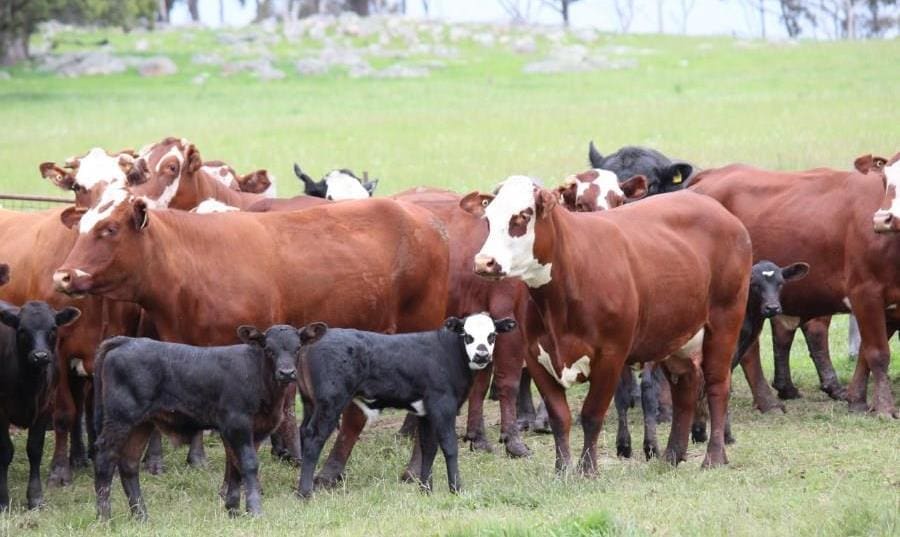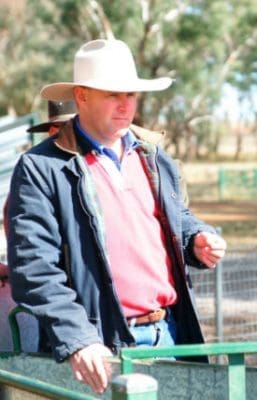
THE legacy of the drought on the Australian cattle herd extends well beyond the huge reduction in numbers. While much of the post-drought rebuilding focuses on the availability and cost of replacement animals, some attention is turning towards the impact on the female base of the herd.
An article in Beef Central last week highlighted the impact the drought has had on marbling and feedlot performance, and potential breeding heifer performance.
While this is likely to play out in feedlots across the country, there are concerns such as those raised last week by some industry figures, such as Steve Martin from Kerwee feedlot that the focus on rebuilding may come at the expense of reduced selection pressure on females.
The comments made by Dr Matt George should also be a focus for producers ahead of their selection decisions for 2020. Of note is his comment “Heifers now being retained for breeding, theoretically may not be as good as their genetics suggest. That’s because their lifetime capacity potential may be compromised. The same effect that’s seen on marbling performance in feeder cattle subjected to drought may be seen in diminished reproductive performance in the heifers retained for breeding.”
One of the major outcomes from the CRC for Beef Cattle during the late 1990s and early 2000s was a better understanding of the impacts growth and nutrition has on animal performance. While much of this work was focused on feedlot performance and eating quality, there were also some valuable lessons for all cattle breeders.
A key finding was the impact that slow growth, and pre-weaning growth setbacks had on cattle. The research determined that slow growth, under 0.6kg/day before animals reach 180-225kg liveweight, is considered a growth setback.
The CRC determined that this results in cattle that not only had lighter weaning weights, but these animals would never physically catch up to their normally-grown siblings.
Post weaning, or beyond 200kg, setbacks were also considered, with these setbacks taking longer for calves to recover and reach target weights and ages than normally grown siblings.
One of the key messages from this work was the earlier in life a severe restriction occurs, the greater its effects will be.
These research results reflect the current observations of Dr George and others currently feeding cattle.
The impact severe restrictions have had on the female portion of the herd is more than likely to result in females that will be physically smaller and less well-grown for their age than producers would normally hope to see.
And while, as Matt George suggests “despite the fact that technically these females have the DNA to perform, that performance may not occur because the expression of that DNA has now been compromised.”
What compromises can be made in selection, when herd rebuilding?
For producers making selection decisions, particularly in light of the pressure to restart programs and capitalise on the seasonal breaks, the question for many is what compromises can be made in selection, particularly with limited female options. And while many producers consider any calf on the ground to be the determining answer, there are some areas that shouldn’t be compromised.
It is important to remember that while the physical appearance of replacement females can be less than desirable, particularly in regard to weight at joining, the genetics those females will contribute to their progeny will not be changed. Therefore, traits that have been a focus for a program can still be capitalised-on in planning future joining programs.
Some changes for the physically restricted females may need to be considered. One of the more useful areas to consider will be the use of Calving Ease (Direct) when selecting bulls, as well as Birth Weight EBVs.
In a year like this where heifers are potentially smaller than usual, these are traits that can be important to genetic traits which may help, particularly in herds where this has not been an issue in the past. The choice of bulls to join with heifers should also be of more importance this year. Physically smaller bulls, such as yearling bulls may be a strategy for many herds.
However, using a yearling bull or smaller bull requires more than the simple assessment of the bull and females physical size. Again, consider the genetic package that the heifer has as a result of selection and choose yearling bulls based on their genetic suitability as well as their physical appearance.
Over the past three years of drought, I have encouraged clients who have made the decisions to retain and join all their heifers to draft heifers into separate joining and management groups.
While it has added to slightly to the daily workload, joining in groups based on size has meant the group of smaller, lighter heifers were able to be more easily identified and subjected to more rigorous supervision at calving. In turn this provided a chance to identify and remove those animals that failed to rear calves or required significant assistance at calving.
Traits that have been non-negotiable at selection, even during the drought, include temperament and structural soundness.
It is important to look beyond the immediacy of getting a calf on the ground and consider two things. Firstly consider the overall marketability of the calf. Temperament and its impact on eating quality as well as on working with cattle at home are areas which shouldn’t be sacrificed for an extra calf.
Soundness is often compromised or sacrificed for additional chances of calves on the ground. However, animals that suffer structural weaknesses tend to experience ongoing effects in later life. This can range from arthritis and lameness through to difficulties grazing. These physical compromises will result over time in over production and decreased levels of herd fertility or performance.
Ultimately, its likely that many producers will have to make some selection compromises this year to reflect lower levels of growth in replacement cattle. While this may result in a year group (or possibly two year groups) being smaller or less well-grown than usual, it doesn’t have to mean an overall compromise on herd goals.
There will be some animals, that for reasons of size, temperament or structure, still should not be joined. As for the rest, with some clear objectives for sire selection and pre and post calving management, they should be able to keep a program on track to meet a business overall breeding objectives.

Alastair Rayner
Alastair Rayner is the Principal of RaynerAg, an agricultural advisory service based in NSW. He regularly attends bull sales to support client purchases and undertakes pre sale selections and classifications. He can be contacted here or through his website www.raynerag.com.au
